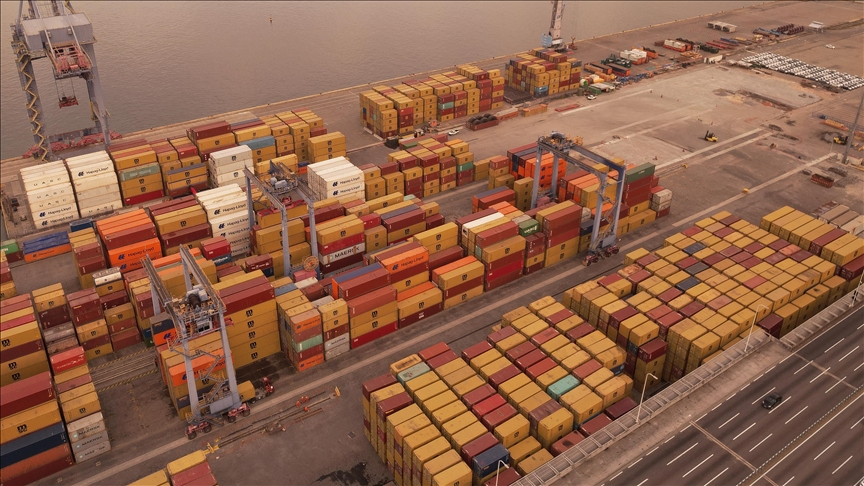 File Photo
File Photo
WASHINGTON
US President Donald Trump’s tariff policies have generated a total of $135.7 billion as of July, the 10th month of the fiscal year, according to data released by the US Treasury Department.
When Trump took office in January, monthly net tariff revenue stood at $7.3 billion, dipping to $7.2 billion in February before rising to $8.2 billion in March.
April saw a sharp jump to $15.6 billion generated from tariff revenue, followed by $22.2 billion in May, $26.6 billion in June, and $27.7 billion in July — a 287.9% increase from the previous year.
Total net tariff revenue for the 2024 fiscal year reached $62.7 billion.
Trump leveraged tariffs as a key tool in trade policy by first implementing a 25% rate on Canada and Mexico and 10% on China on Feb. 1 due to alleged fentanyl trafficking and issues surrounding undocumented migrants.
The Canada and Mexico tariffs were suspended for 30 days after both countries pledged to boost border security, while the 10% levy on Chinese goods took effect on Feb. 4.
The 30-day suspension ended on March 4, reinstating the 25% tariff on Canada and Mexico and raising the China rate to 20%. Two days later, however, Trump did a turnaround, exempting goods compliant with the US–Mexico–Canada Agreement until April 2.
A tariff turning point
The most important development in Trump’s tariffs came on April 2 in the form of sweeping reciprocal tariffs — the day was dubbed “Liberation Day.”
Trump’s reciprocal tariffs came in at a 10% base rate and rose as high as 50%. These rates were reportedly calculated based on tariffs and non-tariff barriers imposed by other countries on the US.
The 10% tariff on all countries began on April 5, with higher rates scheduled for April 9. However, the panic triggered by the tariffs led to a stock market crash in the US, prompting Trump to issue a 90-day tariff pause — except for China — less than 24 hours later.
The US and China’s tariff war ended with 145% total tariffs on Chinese goods and 125% tariffs on American products.
Trade tension escalations eventually led American and Chinese officials to meet in Geneva in May to negotiate mutual tariff reductions for 90 days, lowering US tariffs on Chinese goods to 30%.
During the 90-day tariff pause — from April 9 to July 8 and then extended to Aug. 1 — the Trump administration signed trade deals with the EU, UK, Japan, and South Korea and initiated talks with other countries.
Trump’s steel and aluminum tariffs on all countries came into effect on March 12, but he raised the rate from 25% to 50% on June 4, while his auto tariffs — including cars, vehicles, and basic parts — came into force on April 3.
Trump signed an executive order to change reciprocal tariffs, imposing rates from 10% to 41% for around 70 trading partners on July 31, while additional tariff rates for some countries were increased or reduced. Trump signed another executive order to bring the 25% tariff on Canada up to 35%.
Trump also increased his tariff on Brazil from 10% to 50%, citing national security, and increased the rate on India from 25% to 50% due to its oil purchases from Russia.
Trump on Tuesday extended a deadline on placing higher tariffs on China for another 90 days.
Trump has also said he is considering tariffing pharmaceuticals and semiconductors, while a 50% tariff on copper came into effect on Aug. 1.
Anadolu Agency website contains only a portion of the news stories offered to subscribers in the AA News Broadcasting System (HAS), and in summarized form. Please contact us for subscription options.







